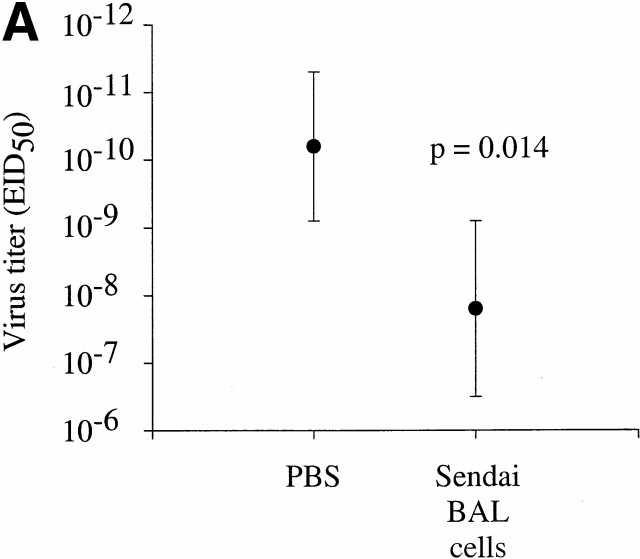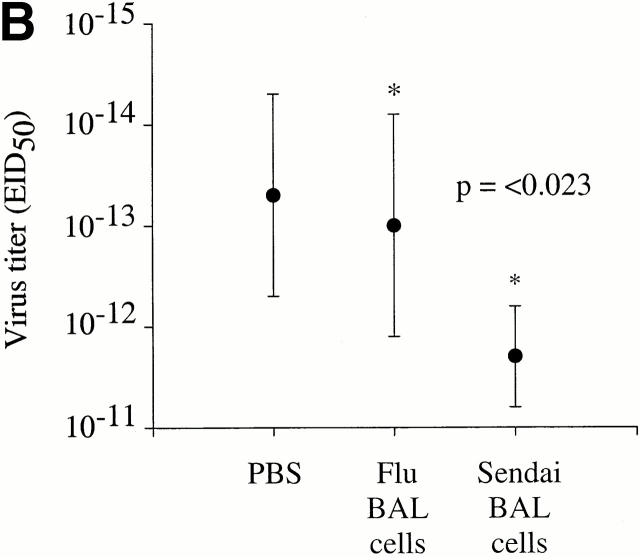Figure 3.
BAL memory cells confer protection against Sendai virus infection. (A) 10 naive C57BL/6 mice were intranasally infected with 500 EID50 Sendai virus. 4 h before infection, the mice received either memory BAL cells (5 × 105 cells in 100 μl, n = 5), or control PBS (100 μl, n = 5) intratracheally. The BAL cells in this experiment were derived from C57BL/6 mice that had recovered from infection with 500 EID50 Sendai virus (35 d after infection). (B) 16 naive β2m-deficient mice were intranasally infected with 500 EID50 Sendai virus. 4 h before infection, each mouse received either Sendai memory BAL cells (106 cells in 100 μl, n = 6), influenza memory BAL cells (106 cells in 100 μl, n = 6), or control PBS (100 μl, n = 4) intratracheally. In this experiment, Sendai memory BAL cells were obtained from C57BL/6 mice at day 40 after infection, whereas influenza memory BAL cells were obtained from C57BL/6 mice at day 41 after infection. In both A and B, virus titers in the lung were determined 4 d after transfer by titrating lung homogenates in embryonated chicken eggs, followed by hemagglutination assays. Where indicated, the difference in viral titers among each group was determined to be statistically significant as based on a standard t test. The data are expressed as log10EID50 and are representative of three independent experiments.


